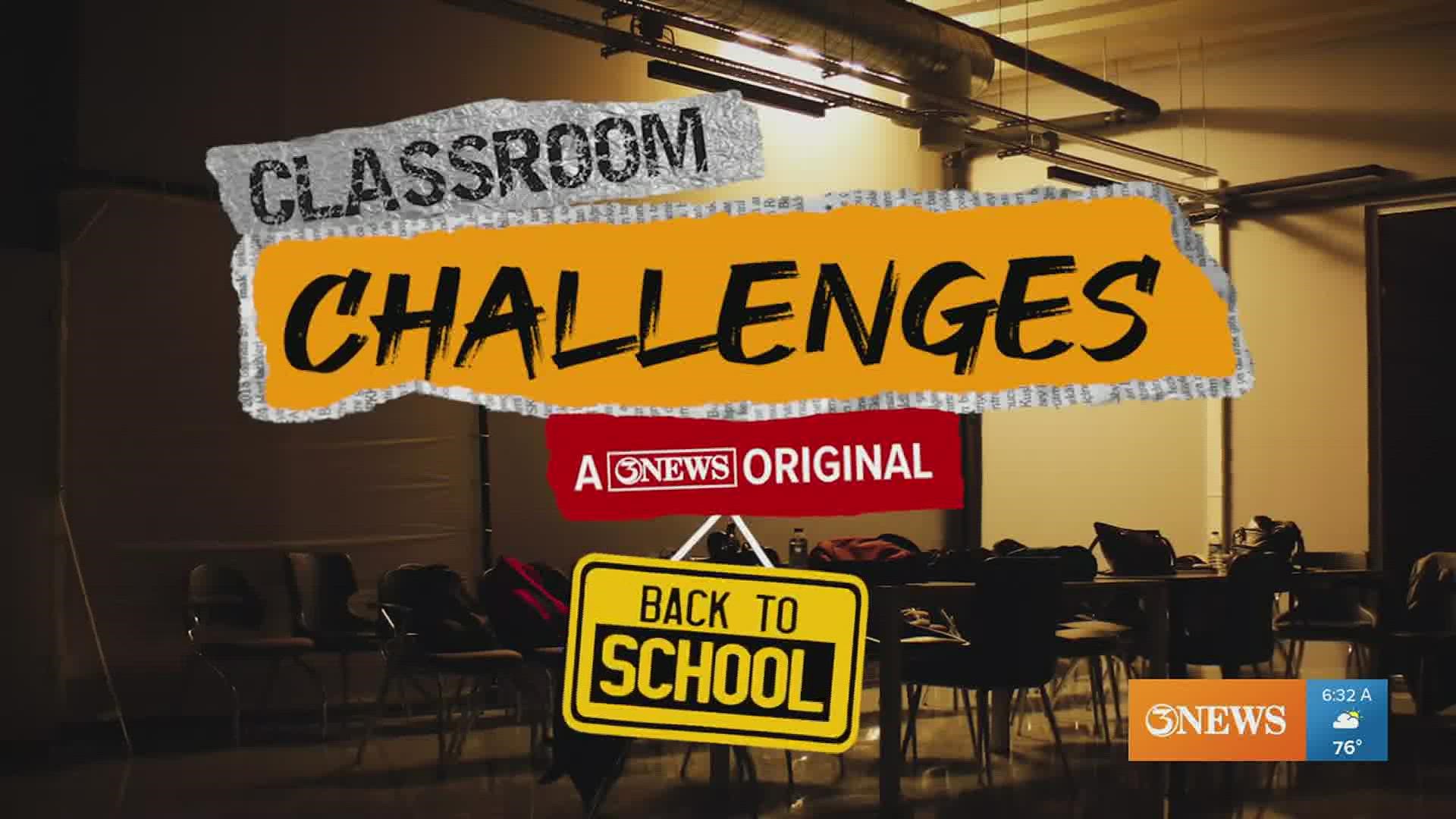CORPUS CHRISTI, Texas — The pandemic impacted every aspect of our daily lives. Homes became offices, restaurants and for many-- classrooms. The Vela family is currently taking down their makeshift classroom and shared with 3NEWS what their at home schooling journey looked like.
Carla Vela is a mom of three and like many parents, she had to find a way to balance everything, including school, under one roof during COVID-19.
“When the pandemic started, I had a pre-k, a first grader, and a second grader,” said Vela.
With girls in different grades, it wasn’t easy, and her living room even transformed into a classroom.
“It was breakfast, lunch, dinner, snacks. We have four dogs, it’s three girls so it was resources, finding resources to make it fun for everyone in different grade levels or something that would help all three of them,” said Vela.
RELATED: Classroom Challenges: An inside look at security and safety across Coastal Bend school districts
Originally Vela’s daughters were in private school but when the pandemic hit their school didn’t offer at-home learning, which led them to find a district that did.
“When I made the decision, it was a big commitment and I couldn’t give up and they didn’t give up either,” said Vela.
Vela was extremely committed and turned a room into a working classroom. With desks, computers, lockers, and even a library.
“We made a t-shirt a uniform. My older one is very creative and artistic, an amazing artist, and she made a logo and we made t-shirts. We had uniforms and we had a cheer-- we made the best out of it,” said Vela.
Despite doing everything she could, Vela still worried about the potential of her girls falling behind.
RELATED: Classroom Challenges: How Coastal Bend districts are making sure their students will be safe
So, Vela leaned on consistency.
“When that March started, there was no break, we had summer here at home and I kept them engaged as much as I could,” said Vela. “Maybe I did a little too much, but they were enjoying it they never really complained.”
Vela says there were still a few challenges.
“When we went back to school, I could see there was a little bit of a gap in the math for my older one and the other one had a little bit of a gap in spelling and the other in the reading,” said Vela.
She says the key to closing these gaps is communicating with teachers.
“I shared my worries, and they were amazing teachers,” said Vela. “Fortunately, they mastered all of their STARR tests and were ready to go back.”
Districts across the Coastal Bend, like Robstown ISD, are working to close any potential learning gaps students may have.
RELATED: Robstown ISD introduces new app to help prevent potential campus threats before they happen
Superintendent Dr. Jose Moreno shared with 3NEWS that statewide, most districts experienced about a 10 percent drop. To combat this, his district is implementing an advisory period for junior high and high school students.
“Our motto again goes back to knowing every student by name and by need and that’ll provide us opportunity to provide additional intervention to every child,” said Dr. Moreno.
Ingleside ISD Superintendent Troy Mirkovich says their learning gap is not as bad compared to other districts.
“When you look at our district compared to the many other local districts around us, we are one of the top districts in Region 2. We are one of the top districts in South Texas,” said Mirkovich.
More from 3News on KIIITV.com:
- Man shot at P.F. Chang's in La Palmera Mall
- Violence at La Palmera Mall being investigated for ties to prior shooting, bank robbery
- Corpus Christi Health Department receives Novavax vaccine
- Classroom Challenges: An inside look at security and safety across Coastal Bend school districts
- New Harbor Bridge at risk of 'collapse' under current design, TxDOT says
- Aransas Pass Police kill man after kidnapping, car chase, shootout
- Harbor Bridge developer still not commenting on TxDOT order to halt construction

